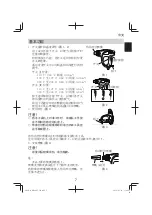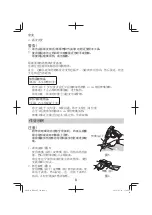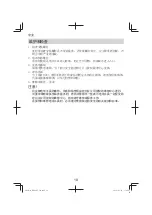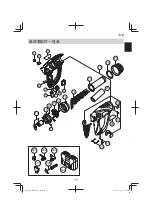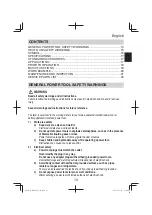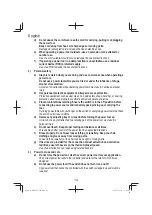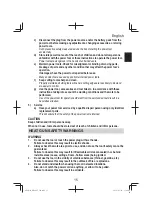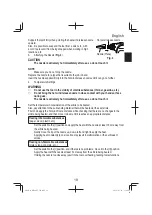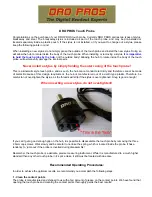
English
20
WORK EXAMPLE
CAUTION
Parts of the nozzles supplied are sharp, so
use gloves when removing them from the
case and when attaching or detaching them.
Select the nozzle in consideration of the
shape of the article being heated and the
area being heated.
1. Peeling
o
ff
paint (
Fig. 5
)
Use nozzle (
fl
at) or nozzle (round) to soften the
paint with the hot wind, and then remove it with
the scraper supplied.
Note that heating the paint too much may result in it
scorching and becoming harder, making it di
ffi
cult
to scrape o
ff
.
2. Softening adhesive (
Fig. 6
)
Use nozzle (
fl
at) or nozzle (round) to soften the
surface and make it easy to peel, and then pull
up one of the edges, blow heat underneath it and
gently peel it o
ff
so that none of the adhesive
remains.
3. Heat wrapping (
Fig. 7
)
Use nozzle (
fl
at) to heat-wrap shrink
fi
lm and tubes.
The material will change color or crack if hot air is
blown onto it from a close distance, so maintain an
appropriate distance while monitoring progress.
4. Forming resin pipes (
Fig. 8
)
Use nozzle (curved surface) to evenly heat the
circumference of the resin pipe.
To prevent the inside of the pipe from narrowing
when bending it, etc., pour sand inside, block
both ends and then gently bend it.
5. Removing putty from window frames (
Fig. 9
)
Use nozzle (glass protector) to soften the putty
with heat, and then remove the putty with the
scraper supplied.
Note that glass may crack if heat is continually
applied to it.
Nozzle (Plane)
Scraper
Fig. 5
Nozzle (Round)
Fig. 6
Nozzle (Plane)
Fig. 7
Nozzle
(Curved surface)
Fig. 8
Nozzle (Glass protector)
Scraper
Fig. 9
000Book̲RH600T̲ChS.indb 20
000Book̲RH600T̲ChS.indb 20
2016/07/19 13:49:42
2016/07/19 13:49:42


